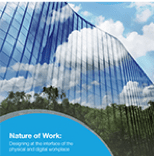Coronavirus: 20 little lessons for successful remote working – based on (almost) 20 years’ experience at DWG
Digital Workplace Group (DWG) has no offices. We have about 100 people across Europe and North America, who work anywhere and everywhere. We did have offices in London and New York until seven years ago – but people didn’t seem to choose to work there often, so we closed them.
Despite this quite unusual mode of operating and our comparative small size, in January this year DWG was rated by the Financial Times as one of the UK’s leading management consulting companies for digital transformation – ranking alongside McKinsey and Accenture.
With COVID-19 now front and centre in the thinking and planning of all organizations, we have been able quickly to adapt – as we have done many times before in response to unforeseen situations.
We describe ourselves as “fully distributed”, and I have written previously about how we actually became closer when we all started to work together in the same “digital office”. I have also shared about how much we enjoy meeting in person and how twice a year our leadership team live together for a working week. DWG has remarkably low levels of time off for sickness, reduced office politics, we all get along extremely well – and we really care about each other in ways that make this feel more like a “working community” than “just work”.
So here are my 20 little lessons relating to remote working, learned since the start of DWG in 2002:
- Start from the top – leaders need to work this way and show that it is fine to do so – no excuses.
- Have a digital workplace manager or team who support people as they get set up to work remotely – everyone needs a helping hand.
- Some people will struggle, so be kind and support them most.
- Turn on your video when on a call, no matter how “bad” you look – but don’t pressure others to do so; video helps but this should be an individual choice each time.
- Buddy up with colleagues who live nearby and co-work together if you want to, for some or even all the time – it’s nice to see them and working alone can get lonely.
- Great audio is the most important digital service you need, totally trumping video. We need to hear each other well and this is far more crucial than seeing each other (nice though that can be, as mentioned above).
- For many, at the moment, remote working is home working; but looking to the future, remote working can be about working wherever you want – and variety of location helps.
- Start and end all meetings on time; punctuality is important – time matters.
- Set regular calls with the people with whom you work regularly so there is a flow of communication in your week.
- Work on documents and projects and teams collaboratively so that you can all see what each other is doing.
- Working remotely (i.e. working anywhere and everywhere) can be much more powerful than being in an office, as you have “everything” at your fingertips. Don’t ask whether remote working works but ask instead why people are so unproductive in the same old office every day.
- This way of working strengthens your business resilience as there is some form of crisis happening somewhere in the world every day – but no matter what or where this might be, your company should be able to carry on, often with minimal disruption. Manufacturers strive to achieve distributed supply chains – this is a “distributed work chain”.
- Your workforce will be happier. They will be less stressed by travel, logistics and through missing personal life events. Happy colleagues make for a happy company, which makes for a successful company, and so we all gain.
- Judge people on what they produce not on whether they “look busy”. You will easily be able to see what people are doing – so trust people to do their best and, when they don’t, call them out and resolve the matter fast, sometimes over coffee!
- Let people work flexibly, within the constraints of business practicalities. If they want to climb mountains, collect their kids from school, meditate for two hours at midday, see their elderly mum at 4pm, who cares? Let them – they will love you for it and their gratitude will show in their work effort.
- Remote working has its challenges: it can get lonely; sometimes we need to see each other in person when problems arise; tech can fail – but work is demanding in all formats and no system is perfect.
- If you’re having to make the shift to remote working in stressful times, without the luxury of planning (as is the case now for so many organizations attempting to deal with the impact of the coronavirus), this of course brings extra challenges. It’s essential to treat people and regions differently, to listen to your colleagues with a sympathetic ear and to understand the strains on them as they struggle to do their best to work effectively in unfamiliar situations.
- Travel as little as possible. This is essential from an ecological standpoint and it also saves the company money and you stress – what’s not to like?
- You will become a healthier, happier and more resilient company and you will never look back.
- This is the future – in the present. Join the movement (whether your video is on or not!).
Take the next step…
Categorised in: Collaboration, Digital workplace, Future of work, Remote working during COVID-19

